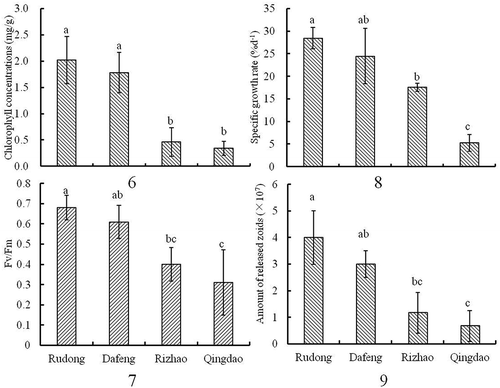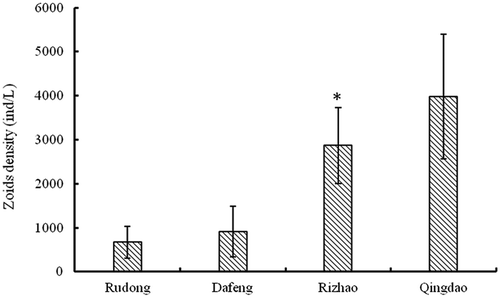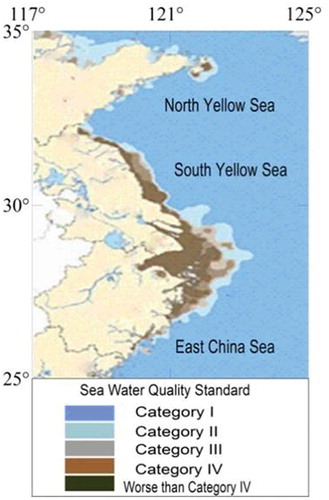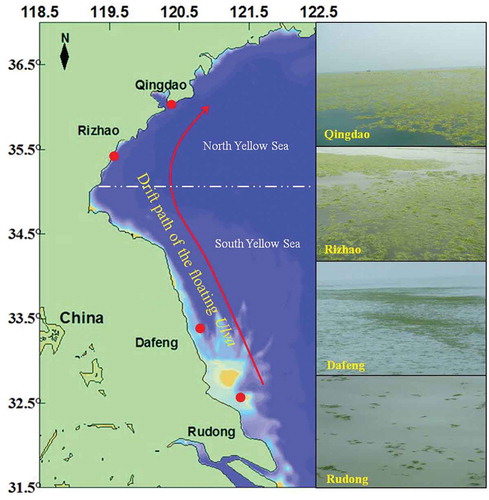Figures & data
Figs 2–5. Morphological variations in floating Ulva prolifera thalli along the coast of the Yellow Sea. Scale bar = 2 cm.
Fig. 2. Morphology from Rudong oceanic area.
Fig. 3. Morphology from Dafeng oceanic area.
Fig. 4. Morphology from Rizhao oceanic area.
Fig. 5. Morphology from Qingdao oceanic area.

Figs 6–9. Physiological parameters of floating Ulva prolifera in the four areas. Error bars are standard deviation (n = 3). Different letters (a–c) on the error bars indicate statistically significant differences (P < 0.05).
Fig. 6. Chlorophyll concentration in the four areas.
Fig. 7. Chlorophyll fluorescence Fv/Fm in the four areas.
Fig. 8. Specific growth rate in the four areas.
Fig. 9. Number of released zoids in the four areas.

Fig. 10. Density of filamentous Ulva species developed from microscopic propagules in seawater samples collected from four investigated areas of the Yellow Sea. Error bars represent standard deviation (n = 3). *Surface seawater samples in the Rizhao area were provided by Dr Liang Hua from the Marine Scientific Research Institute of Shanghai Ocean University.

Fig. 11. Seawater quality standards in oceanic areas of China (Category I: clean marine areas, suitable for marine fish culture, marine nature reserves, and marine endangering life protection zones, DIN < 0.20 mg l-1, PO43 --P < 0.015 mg l-1. Category II: less clean marine areas, suitable for aquiculture, marine bathing, marine sports in which people have direct contact with water or recreation; water suitable for the human food industry, DIN < 0.30 mg -1, PO43 --P < 0.030 mg -1. Category III: lightly polluted marine areas; suitable for ordinary industrial park water usage, DIN < 0.40 mg l-1, PO43 --P < 0.030 mg l-1. Category IV: medium-polluted marine areas, suitable only for marine ports and marine development areas, DIN < 0.50 mg l-1, PO43 --P < 0.045 mg l-1. Worse than Category IV: Seriously polluted marine areas.


